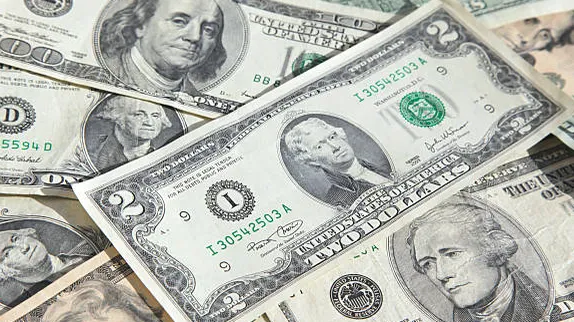
You might feel rich or poor, but most Americans fall within the mainstream. Certain money-related behaviors and characteristics apply to the majority. The financial middle class remains the country’s backbone.
Many of the financial aspirations and tendencies of this broad group haven’t changed much in recent decades and possibly won’t. You might even call them normal.
Here are several of those behaviors and traits involving the types of assets you probably own, the types of debts you likely have, how you behave and so on. The more that apply to you, the more mainstream you are.
You’re a homeowner
Most American families own homes, nearly two in three, and this has been the case for decades. In fact, the homeownership rate has been one of the most stable economic indicators out there. The rate peaked at 69.2% in 2004, before the housing slump that hit a few years later, according to the Census Bureau and the Federal Reserve Bank of St. Louis. But it has mostly bounced between 63% and 68% dating to 1965. It’s currently at 65.6%.
Owning a home is a source of pride and a measure of financial success, and tax factors favor homeowners. For example, the federal government allows mortgage interest and property taxes to be deducted, within limits.
Also, owners can exclude taxes on at least some housing capital gains, unlike with most other investments. Owners who occupy their homes for at least two of the five years prior to sale can avoid taxes on up to $250,000 in gains if single or $500,000 for married couples. The odds of making a profit improve for people who stay put for many years, as houses, condos and townhomes generally increase in value over time.
You’re not a 401(k) millionaire
Tax-sheltered retirement accounts are popular workplace benefits, but they haven’t made most people millionaires. In fact, 53.9% of Americans with these accounts have accumulated less than $10,000 in them, according to a recent tally by Craig Copeland, director of wealth-benefits research at the Employee Benefit Research Institute.
Another 20.4% of American households have amassed between $10,000 and $99,999, he said, while 16.3% have accumulated between $100,000 and $499,000, and 4.8% have at least $500,000 but less than $999,999. Just 4.6% of Americans have retirement balances of $1 million and up. A mere 0.2% exceed $5 million.
The amounts include balances in 401(k) and other workplace defined-contribution plans, along with Individual retirement accounts, Copeland said. They’re based on figures in the Federal Reserve’s 2022 Survey of Consumer Finances and thus likely have changed a bit since then.
In general, Copeland recommends not worrying so much about dollar balances in your account, especially if you are playing catch up, but focusing instead on making retirement-account contributions and sticking with them. “It’s really about the consistency of savings to generate what you will need,” he said.
You have debts, and several different types
Most American families, roughly three in four, have mortgages or other types of debts. In fact, total personal debt now stands at a record $17.5 trillion, and 77% of American households have at least some debt, according to Ramsey Solutions, basing that on data from the Federal Reserve and other sources.
Much of this data is secured by assets such as housing, while other types like credit-card borrowings are not. Mortgages are the largest category, with an average consumer debt of around $244,500, according to a study of categories released earlier this year by Experian.
Home equity lines of credit are next at around $42,100, followed by student loans ($38,800), auto loans ($23,800), personal loans ($19,400) and credit-card borrowings ($6,500). Not everyone has debts in each of these categories.
Of note, Experian found more credit-card borrowers carry a balance from month to month, and that’s a concern as interest rates on cards have risen in recent years and now average around 20%. Card balances grew 17% in 2023, the company said.
You don’t move your investments around all that often
Most investors, especially those doing so for the long haul, don’t appear to shuffle money around all that often, such as during the stock-market swoon in early August. Granted, investor trading activity can be hard to measure, but there’s evidence to suggest most people just don’t react all that much to volatility or headlines, which is good.
For example, a survey of individual investors holding money in 401(k) plans and other workplace defined-contribution programs found that only 4% changed their asset allocations during the first quarter of 2023, either by purchasing or selling stock or bond funds or making other adjustments.
The study by the Investment Company Institute, the mutual fund trade association, portrayed a similar picture in prior quarters and years. Even during the first quarter of 2009, near the end of a long, deep stock-market slide, only 7% of participants made changes to their portfolio balances.
You have one or more bank accounts
People who are tied into the banking system generally are more affluent and better positioned to earn interest on savings and qualify for more affordable loans when needed, while avoiding reliance on relatively costly services such as payday loans. A key way to measure this is to examine the percentage of “unbanked” households compared to the population overall.
Only 6% of adults were “unbanked” as of a Federal Reserve study in 2022, meaning that neither they nor their partner had a checking, savings or money market account at a bank or credit union. The percentage was unchanged compared to the prior year.
Unbanked rates are higher among people with low incomes. Virtually all families with income above $50,000 have one or more accounts, but the unbanked percentage was 17% among those with incomes below $25,000. Also, young adults, Blacks, Hispanics and disabled individuals have less connection to the banking system, the report said.























